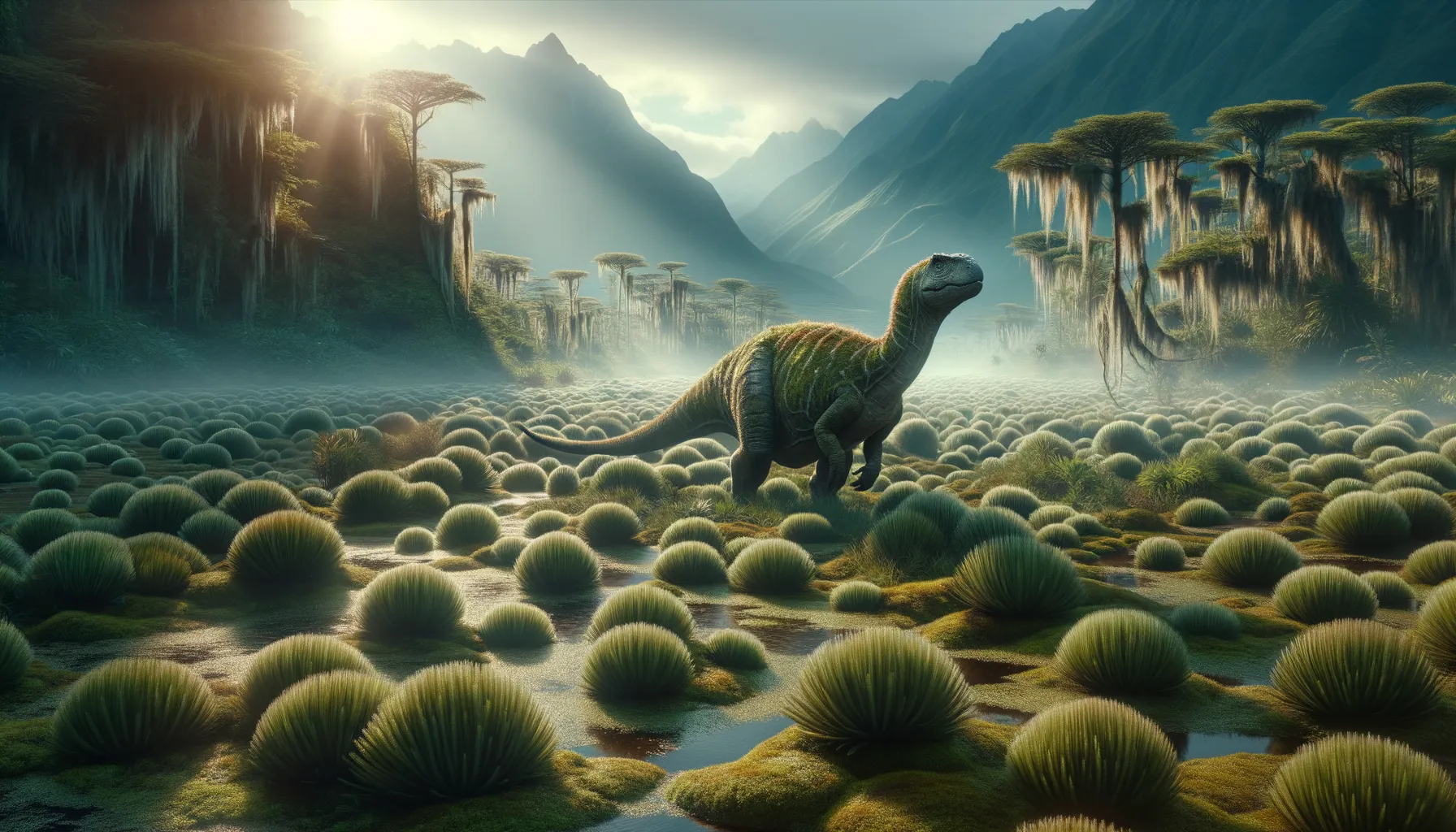
Gongbusaurus
A nimble herbivore of ancient China!
Period
Jurassic
Length
Ranged from 1.2 to 1.5 meters long.
Height
Estimated around 1 meter tall.
Weight
Approximately 10 to 20 kilograms.
Gongbusaurus was a small herbivorous dinosaur that lived during the Jurassic period. Its remains were first discovered in the Sichuan Province of China. Not much is known about this dinosaur, but it is believed to have been a nimble creature, possibly living in herds and feeding on low-lying plants. Its name translates to 'Gong Bu lizard', referring to its discovery location.
Diet
Gongbusaurus was a herbivore, feeding on low-growing plants and vegetation. Its small size implies it might have foraged among dense foliage, consuming ferns and cycads typical of its era.
Hunting
Being a plant-eater, Gongbusaurus did not hunt other animals. Instead, it likely roamed in groups to find ample vegetation to support its diet.
Environmental challenges
Living during the Jurassic period, Gongbusaurus faced environmental challenges such as climate shifts and changing plant life. It had to adapt to varying levels of vegetation abundance, which could impact its food supply. Predation from larger carnivores also posed a constant threat, requiring agility and possibly group living as survival tactics.
Speed
Likely a moderate speed runner due to its small size.
Lifespan
Estimated to be around 10 to 20 years.
First discovery
Discovered in Sichuan, China, in 1983.
Fun Facts
- Gongbusaurus was a small, plant-eating dinosaur that lived during the Late Jurassic period.
- This dinosaur was discovered in China, where many dinosaur fossils have been found.
- Gongbusaurus was similar in size to a medium-sized dog, making it one of the smaller dinosaurs.
- The name Gongbusaurus means 'Gongbu lizard,' named after a district in China where it was found.
- Unlike many larger dinosaurs, Gongbusaurus moved quickly on its two legs.
- Fossils of Gongbusaurus are not very well-known, which makes it a bit of a mystery to paleontologists.
- It is believed that Gongbusaurus lived in what would have been a lush, forested environment at the time.
Growth and Development
Gongbusaurus would have grown steadily from a hatchling, relying on plentiful plant resources for nutrition. Juvenile dinosaurs likely stayed close to adult members for protection. Growth rates depended heavily on environmental conditions and food availability, both of which could influence size and maturity.
Habitat
Gongbusaurus inhabited forested and lush environments where vegetation was abundant. It thrived in regions providing ample cover and food sources, which included the forests and riverine areas of what is now modern-day China. These habitats were crucial for shelter from predators and supporting its herbivorous diet.
Interaction with other species
Gongbusaurus likely lived in proximity to other herbivorous dinosaurs, sharing food resources and sometimes forming mixed-species groups for safety. Its primary concern was avoiding carnivorous predators, likely influencing its behavior to be cautious and quick to flee. Interaction was probably more competitive among herbivores rather than aggressive.
Natural lifespan
Approximately 10 to 20 years in the wild.
Reproduction
As a dinosaur, Gongbusaurus laid eggs. It likely nested in secluded areas to protect its offspring from predators. Parental care might have occurred, with adults guarding the nest, although specific behaviors are not well-known due to limited fossil evidence.
Social behaviour
Gongbusaurus may have been social, living in small herds or groups. This behavior would provide protection against predators and aid in locating food resources. Social structures might include defined roles within groups, though exact interactions remain speculative.
Fossil locations
Fossils of Gongbusaurus have been found primarily in Sichuan Province, China. These discoveries provide vital information about its existence and environment. Continued excavations in this region might reveal more about its lifestyle and evolutionary history.
